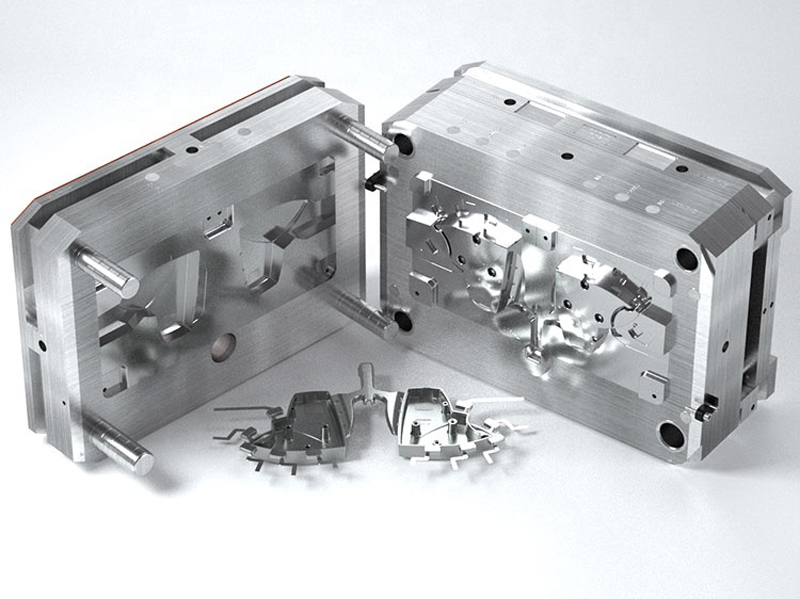
In addition to the basic requirements of normal design of die-casting molds, special consideration should also be given to:
1. The die casting mould china adopts a reasonable and advanced simple structure, so that the workpiece is accurate and reliable, and the rigidity of the structure is good, that is, the mold has enough thickness to ensure that it has enough rigidity to prevent the mold from deforming and cracking. At the same time, it is also necessary to consider the convenience of mold disassembly and replacement, which is beneficial to prolong the service life of the mold;
2. The parts of injection moulding products on the die-casting mold should meet the requirements of the machining process and heat treatment process. Avoid or reduce sharp corners and thin walls as much as possible to facilitate subsequent heat treatment and prevent stress concentration. If the structure cannot avoid sharp corners, sufficient R corners should be reserved when roughing, and processed in place after heat treatment to avoid the risk of heat treatment cracking.
3. For large die-casting molds (the projected area of the parting surface is greater than 1 square meter), a square guide column guide system should be used to avoid the large difference in thermal expansion between the dynamic and fixed molds, resulting in a decrease in the guiding accuracy;
4. For the gating system, exhaust system and cooling system designed for large and complex die-casting molds, it is best to do flow analysis and heat balance analysis.
In this way, the position, angle and quantity of the runner system (sprue, runner, inner gate) and constant temperature preheating system will be reasonably arranged; In the cavity, it is closely related to the position, direction and flow state of the molten metal entering the cavity, and can adjust the filling conditions such as filling speed, filling time, and cavity temperature.
In die-casting production, the gating system also has a significant impact on the quality of die-casting parts, the efficiency of die-casting operations, the life of the mold (the erosion and corrosion of the mold cavity wall by the molten metal at high temperature, high pressure, and high speed, etc.), and the trimming and cleaning of the die-casting parts, it can be seen that the design of the gating system is extremely important for mold supplier;
5. Precautions for the mould design services of the inner gate of the die-casting mold: the high-temperature molten metal entering the cavity from the inner gate should not enter the wall and core of the impact dynamic fixed model from the front to prevent early erosion, sticking and cracking of the cavity. and other phenomena; when using multiple inner gates, it is necessary to consider preventing the molten metal from entering the cavity and converging from several paths, colliding with each other to produce eddy currents, air entrainment and oxidation slag inclusions and other defects; the selection of the thickness of the inner gate is generally based on Based on empirical data, it is recommended to choose a larger size as far as possible under the conditions of mold filling, so as to avoid the impact of excessive injection speed, which may cause early erosion, sticking, pitting and cracking of the mold;
6. Design of die-casting mold overflow groove and exhaust groove: The function of the overflow groove is to accumulate the cooling metal liquid and the gas-coated liquid metal that first enter the cavity, and adjust the temperature of each part of the mold to improve the heat balance of the mold. Conducive to prolonging the service life of die-casting molds. It is generally set at the end of the molten metal process, and setting a suitable overflow tank can improve the filling conditions and improve the quality of castings.
The exhaust groove is used to discharge the air and the gas generated by the volatilization of the paint from the cavity, and the position of the exhaust groove is related to the position of the inner gate and the product structure. In order to discharge the molten metal from the die casting as much as possible when the gas in the cavity is injected, the exhaust groove is set at the position where the molten metal is last filled. The exhaust groove is generally combined with the overflow groove and arranged at the rear end of the overflow groove to enhance the overflow and exhaust effect.






 Call us on:
Call us on:  Email Us:
Email Us:  Shengan Building A, Hengzeng Road Chang'an Town Dongguan City,
Shengan Building A, Hengzeng Road Chang'an Town Dongguan City,